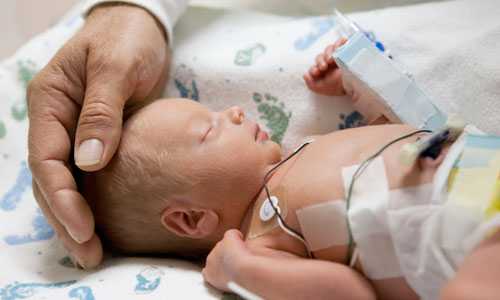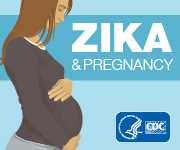Data & Statistics
Birth defects are common, costly, and critical. Read below for the latest national statistics on the occurrence of birth defects in the United States.
For data on specific birth defects, please visit the specific birth defects pages.
In the United States
- Birth defects affect one in every 33 babies (about 3% of all babies) born in the United States each year. [Read article]
- Birth defects are the leading cause of infant deaths, accounting for 20% of all infant deaths. [Read article]
National estimates for 21 selected major birth defects, 2004–2006 [Read summary]
The 21 selected major birth defects do not include genitourinary birth defects, including hypospadias.
| Birth Defects* | Cases per Births | Estimated Annual Number of Cases |
|---|---|---|
| Adjusted for maternal race/ethnicity** | ||
| Central nervous system defects (brain and spinal cord) | ||
| Anencephaly |
1 in 4,859 |
859 |
| Spina bifida without anencephaly |
1 in 2,858 |
1,460 |
| Encephalocele |
1 in 12,235 |
341 |
| Eye defects | ||
| Anophthalmia/microphthalmia |
1 in 5,349 |
780 |
| Cardiovascular defects (heart) | ||
| Common truncus (also called Truncus arteriosus) |
1 in 13,876 |
301 |
| Transposition of great arteries |
1 in 3,333 |
1,252 |
| Tetralogy of Fallot |
1 in 2,518 |
1,657 |
| Atrioventricular septal defect |
1 in 2,122 |
1,966 |
| Hypoplastic left heart syndrome |
1 in 4,344 |
960 |
| Orofacial defects (middle of the face) | ||
| Cleft palate without cleft lip |
1 in 1,574 |
2,651 |
| Cleft lip with or without cleft palate |
1 in 940 |
4,437 |
| Gastrointestinal defects (esophagus, stomach, and intestines) | ||
| Esophageal atresia/tracheoesophageal fistula |
1 in 4,608 |
905 |
| Rectal and large intestinal atresia/stenosis |
1 in 2,138 |
1,952 |
| Musculoskeletal defects (muscles and bones) | ||
| Reduction deformity, upper limbs |
1 in 2,869 |
1,454 |
| Reduction deformity, lower limbs |
1 in 5,949 |
701 |
| Gastroschisis |
1 in 2,229 |
1,871 |
| Omphalocele |
1 in 5,386 |
775 |
| Diaphragmatic hernia |
1 in 3,836 |
1,088 |
| Adjusted for maternal age** | ||
| Chromosomal anomalies (extra chromosomes) | ||
| Trisomy 13 |
1 in 7,906 |
528 |
| Trisomy 18 |
1 in 3,762 |
1,109 |
| Trisomy 21 (Down syndrome) |
1 in 691 |
6,037 |
*The national estimates data come from 14 birth defects tracking programs: Arkansas, Arizona, California [8-county Central Valley], Colorado, Georgia [5-county metropolitan Atlanta], Illinois, Iowa, Kentucky, Massachusetts, North Carolina, Oklahoma, Puerto Rico, Texas, and Utah. The number of live births represented by these 14 programs from 2004–2006 was 4,038,506.
** For this study, researchers took into account the mother’s race/ethnicity and the mother’s age (for Trisomy 13, 18, and 21), which allows state and local programs to use these estimates as a point of reference for comparison with future estimates. Adjustments are based on the United States live birth population, 2004–2006.
Birth Defects Prevention

Folic acid is a B vitamin that, if taken before and during early pregnancy, can help prevent neural tube defects (NTDs), which are major birth defects of the baby’s brain and spine (anencephaly and spina bifida). In 1996, the United States Food and Drug Administration (FDA) mandated that by January 1, 1998 all grain products labeled as ‘enriched’, such as breads and cereals, have folic acid added to them to help reduce the risk of NTDs. This is known as folic acid fortification.
- Using data from state birth defects tracking systems, researchers found that since folic acid fortification, about 1,300 babies are born each year without an NTD who might otherwise have been affected. [Read article]
Differences in Birth Defect Occurrence by Race/Ethnicity
Many birth defects vary by racial or ethnic group. Investigating these differences will help us to understand why some birth defects occur more or less often in certain groups, and will lead to future efforts to reduce these differences. [Read summary]
Listed below are birth defects that have significantly higher or lower occurrence in selected racial and ethnic groups when compared to non-Hispanic white:
|
Much higher occurrence1 |
Much lower occurrence2 |
|
|---|---|---|
| American Indian/Alaska Native, Non-Hispanic |
|
|
| Asian, Non-Hispanic | ||
| Black, Non-Hispanic |
|
|
| Hispanic |
1 These conditions were found to have significantly higher occurrences in the noted races and ethnicities compared to non-Hispanic white.
2 These conditions were found to have significantly lower occurrences in the noted races and ethnicities compared to non-Hispanic white.
Note: These estimates come from data from 12 birth defects tracking programs: Arizona, Colorado, Florida, Georgia [metropolitan Atlanta], Illinois, Massachusetts, Michigan, Nebraska, New Jersey, New York, North Carolina, and Texas. This study included 13.5 million live U.S. births from 1999 to 2007, meaning 1 of every 3 births in the United States during that time period was included in the study. Even though programs try to collect information on all occurrences, some birth defects might not be captured by programs if the outcome is not a live birth. This could underestimate the occurrences of some birth defects.
Differences in Survival by Race/Ethnicity

Survival of babies and children with birth defects can vary by racial or ethnic group. Understanding these differences can provide important information for those involved in developing health policies and planning for services. [Read summary]
- In a study using data from 12 birth defects tracking systems, survival was poorer among babies born to non-Hispanic black and Hispanic mothers, compared to babies born to non-Hispanic white mothers.
- Small to moderate differences in survival during the first 28 days of life were seen between racial/ethnic groups.
- Compared to babies born to non-Hispanic white mothers
- Survival from 28 days to 1 year of age was poorer among babies born to non-Hispanic black mothers for 13 of the 21 birth defects studied.
- Survival from 28 days to 1 year of age was poorer among babies born to Hispanic mothers for 10 of the 21 birth defects studied.
Note: The study covered about 39% of U.S. live births during the study period from 1999-2007.
- Page last reviewed: October 11, 2016
- Page last updated: September 21, 2016
- Content source:



 ShareCompartir
ShareCompartir